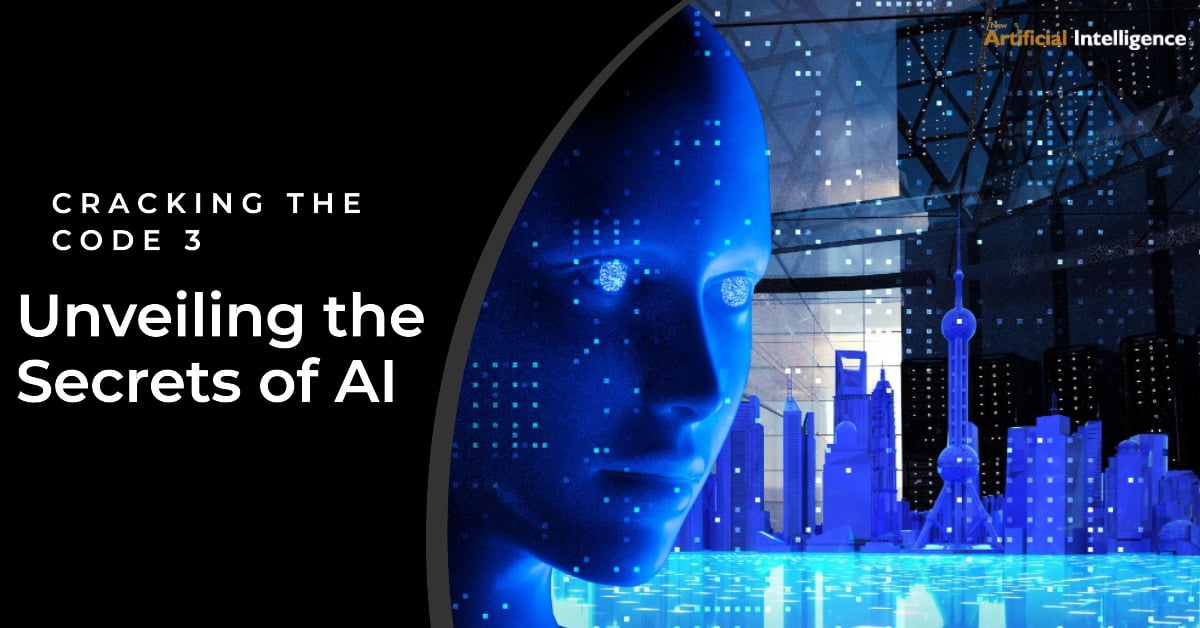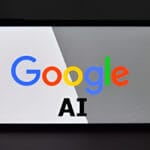Cracking the Code : 3 Unveiling the Secrets of AI
Table of Contents
Artificial intelligence (AI) has permeated each difficulty of our lives, from customized smartphone tips to self-riding cars navigating town streets. But have you ever ever wondered how this reputedly magical era works? This blog delves into AI’s captivating worldwide world secrets, revealing the secrets and strategies behind its first-rate abilities.
#1 Demystifying the Process: Core Concepts of AI
At its centre, AI is prepared to replicate human cognitive abilities like getting to know, reasoning, and problem-solving in machines. This is carried out through an aggregate of numerous technologies:
- Machine Learning: This is the backbone of maximum cutting-edge AI applications. Machine studying algorithms analyze large portions of records to grow awareness of patterns and tendencies. The algorithms can make predictions or picks without unique programming based on those styles.
- Deep Learning: This subfield of device-gaining knowledge uses synthetic neural networks stimulated through the human mind. These complicated networks examine facts in layers, mimicking how neurons technique statistics. Deep studying has performed top-notch achievements in obligations like photograph reputation, speech reputation, and natural language processing.
- Data: Fueling the fireside of AI is the information it’s miles professional on. The high quality and quantity of data are crucial for constructing accurate and dependable AI models.
- Algorithms: These instructions tell AI structures how to technique statistics and make decisions. Different algorithms are used for one-of-a-kind capabilities, together with type, regression, and clustering.
- Hardware: The computational electricity required for walking complex AI models is first-rate. Robust hardware systems consisting of GPUs and TPUs are critical for schooling and deploying AI programs.
#2 Unveiling the Magic: How AI Performs Remarkable Tasks
Now that we apprehend the central concepts, we’re discovering how Artificial Intelligence accomplishes particular obligations:
- Image Recognition: AI structures trained on millions of pictures can accurately apprehend items, faces, and scenes. This technology powers facial recognition software, self-using cars, and clinical picture assessment.
- Natural Language Processing (NLP): AI can recognize and examine human language, allowing duties like system translation, chatbots, and sentiment evaluation. NLP has revolutionized how we interact with computer systems and get admission to statistics.
- Speech Recognition: AI structures can convert spoken language into textual content with high-quality accuracy. This generation powers virtual assistants like Siri and Alexa, making our lives less complicated and more accessible.
- Predictive Analytics: AI can look at statistics to choose patterns and traits, permitting us to make correct predictions about future occasions. This generation is applied in numerous domains, which include finance, advertising, and healthcare.
- Robotics: AI-powered robots are becoming increasingly state-of-the-art, performing tasks ranging from meeting line paintings to surgical treatment. Robotics has the functionality to revolutionize many industries and beautify our lives in numerous techniques.

#3 Beyond the Hype: The Future of AI
AI is evolving, and its effect on our lives is anticipated to develop even more appreciably. Some potential future packages consist of:
- Personalized Education: AI-powered tutors can tailor studying evaluations to individual college students’ wishes, enhancing studying consequences and filling the success gap.
- Enhanced Creativity: AI can assist artists and designers in producing new thoughts, participating in responsibilities, and generating progressive content material.
- Smart Cities and Infrastructure: AI can optimize site visitors together with the drift, control electricity consumption, and enhance the overall efficiency of cities and infrastructure.
- Space Exploration and Robotics: AI-powered robots can discover new planets, accumulate precious information, and assist astronauts in their missions.
- Personalized Healthcare: AI can examine character genetic data to predict fitness risks, personalize treatment plans, and offer preventive care.
It’s vital to recall that AI is a powerful tool with the capacity for each suitable and lousy. As we skip forward with this era, it is essential to technique it with open minds, critical thinking, and willpower to use its power for the most appropriate.
FAQs:
1. What is the distinction between supervised and unsupervised learning?
– Supervised learning: This form of machine reading involves supplying the AI with categorized records, which means the records include both the input and the desired output. The AI learns by analyzing the patterns in these facts and then uses those patterns to wait for the production of new, unseen information.
– Unsupervised studying: The AI is excellent in this form of tool mastering, given unlabeled statistics. Because of this, the statistics mainly consist of the input. The AI must then learn how to come to be aware of styles and relationships in the facts on its personal, without any steerage approximately what it needs to be seeking out.
2. How do neural networks work?
Neural networks are inspired by the shape and characteristics of the human brain. They are made from interconnected nodes, known as neurons, that method information. Each neuron receives inputs from distinctive neurons and plays a calculation on those inputs, after which it sends its output to unique neurons. This system is repeated repeatedly, permitting the network to study and adapt to new facts.
3. What is the difference between AI and automation?
AI is often pressured by automation, but there are vital versions. Automation is a used era to carry out responsibilities that have been formerly accomplished with the aid of people, including robotic assembly strains. AI, as a substitute, is ready to grow realistic machines that may study and reason like people. While automation can replace hard work, AI can increase human competencies and solve troubles that are too complex for people.
4. How will AI impact the future of jobs?
AI will have an exceptional effect on the destiny of jobs. Some jobs may be automatic, at the same time as others could be created. The key can be to build capabilities that may be complementary to AI, which include creativity, critical thinking, and trouble-fixing.
Conclusion:
AI is not a technological information fiction trope but a reality shaping our gift and influencing our destiny. By knowing how AI works, we can be better prepared to navigate its effect and ensure it blesses all of humanity.
Do you have any questions about how Artificial Intelligence works? Transfer your thoughts and queries in the comments below!












1 thought on “3 Unveiling the Secrets of AI: Cracking the Code”